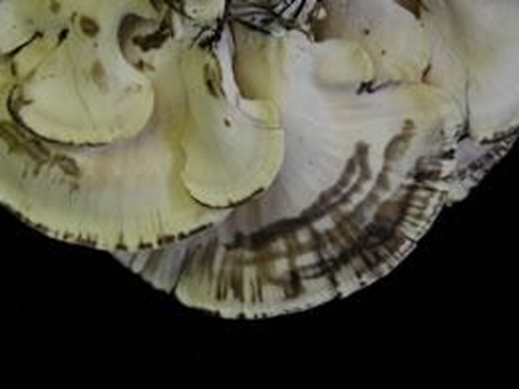| Macroscopic characters | shape | Large; stipitate- pileate; imbricate fanshaped to spathulate |
| size | Up to 30 cm broad and long |
| texture | Fleshy when fresh; fibrous with age |
| pileus | Glabrous; smooth; ochraceous to brown when old |
| stipe | Almost absent; short; stout; ochraceous and smooth |
| context | Whitish to cork-coloured; lighter than tubes; distinctly fibrous |
| pore surface | White to wood-coloured; darkening when touched in fresh condition |
| pores | Small and entire; 3-5 per mm |
| tube layer(s) | Up to 8 mm deep; concolorous with pore surface |
| Microscopic characters | hyphal system | Monomitic: generative hyphae hyaline, thicked-walled in context and stipe, unbranched to rarely branched, few septa, 6- 14 um wide |
| clamp connections | None |
| sterile elements | N/A |
| basidiospores | Broadly ellipsoid to subglobose; hyaline; smooth; thin-walled |
| Habitat characters | substrate/host | On the ground close to hardwood stumps, also reported on Douglas fir |
| seasonality | Annual |
| type of decay | Causes a white rot in dead and living hardwoods |
| range | Eastern and Central United States, from New York to Louisiana; circumglobal in the Northern Hemisphere |
| Notes | |
| References | Gilbertson & Ryvarden, 1987; Grand & Vernia, 2007; Overholts, 1953 |








